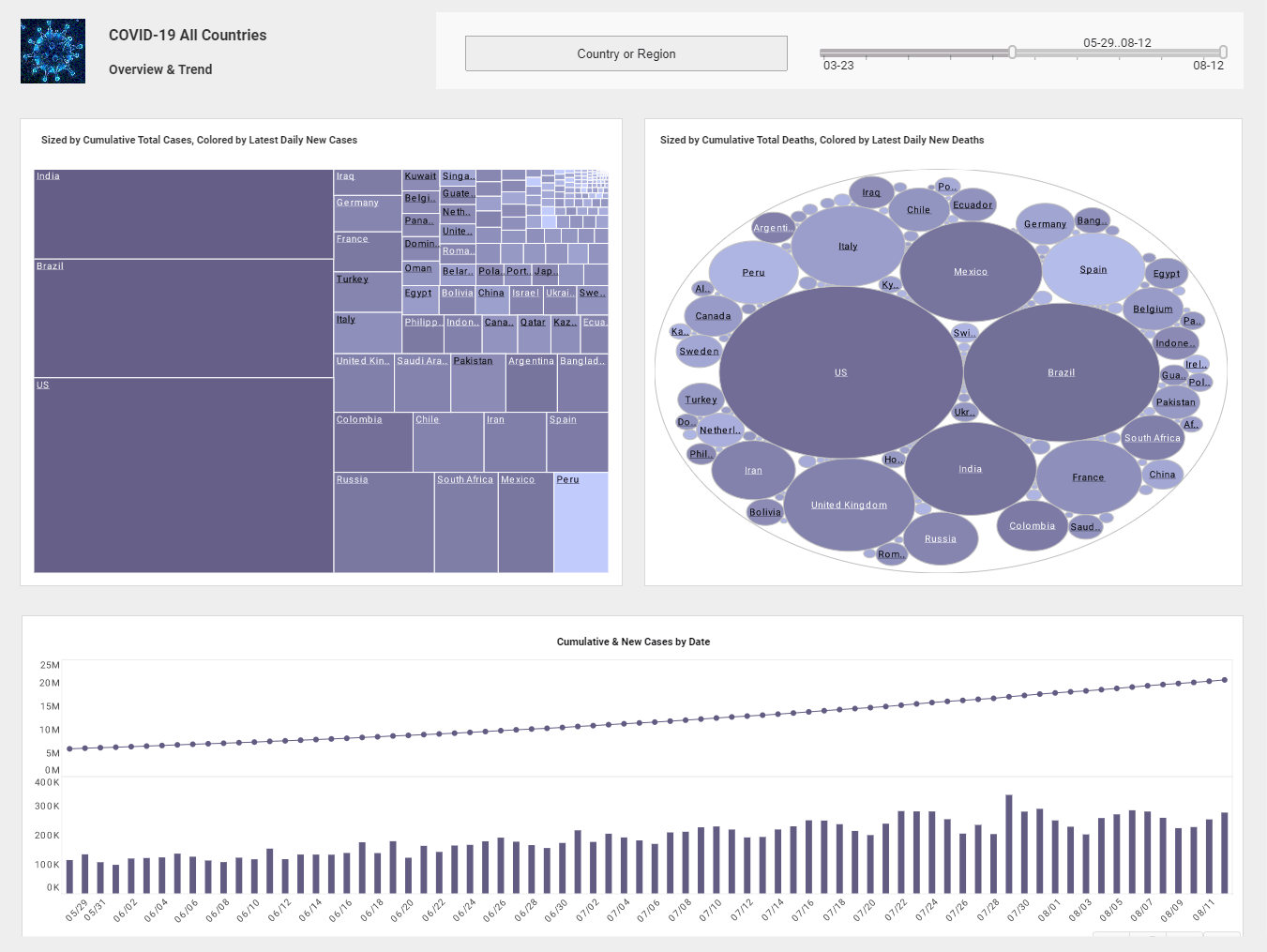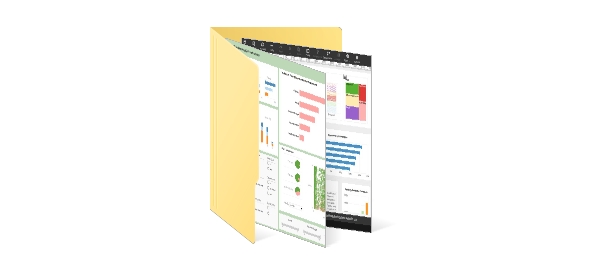The Process of Proliferating Business Intelligence
This is the continuation of the transcript of a Webcast hosted by InetSoft on the topic of "Business Intelligence Today." The speaker is Mark Flaherty, CMO at InetSoft.
We connected directly to the data in our SAP system. And we were then able to demonstrate the capabilities of StyleBI to all our internal clients. That began to generate a lot of excitement, a lot of participation, and people started thinking about what the possibilities were for StyleBI.
Since then, what we have done is we are now in the process of proliferating business intelligence, and what I mean by that is actually getting the BI tool fully functional to make it available to use with all of our info cubes that we have already available. We expect to do that over the next probably about six or seven weeks. And in the second half of the year, we will have a number of projects lined up.
Even in this preliminary stage, though, we have already seen some organizational impact. People are starting to see how they can use this information, how easy it is to access. The tool is very intuitive. The ability to actually have it on the iPhone is great. We have gone ahead and we have demonstrated that. We have demonstrated it on the iPad now. So as a result of that, people are starting to say, “You know what, how can I use the information that I have available? What do I need available to me at my fingertips anytime?”
And now let’s hear from another InetSoft customer, Len Barrymore.
Look at Point-of-Sale Data
Len Barrymore: We had a really good case that came up from our business about how to give the users the ability to look at point-of-sale data from clients. So if we want to say ‘how many car seats did I sell this month versus last month’ or ‘this year versus last year’ in this region for this customer grouping, it takes just a couple of clicks in StyleBI.
When our users saw the demo, they said, “We have got to jump on this right now.” We firmed up our architecture, our data model and our cube design was cleaned up. We then did a really quick demo using InetSoft's hosted evaluation option. We loaded some data in the Cloud, and we showed our people what the possibilities would be for the BI product, and they were like, “Okay, this is something we are very, very interested in.”
We look at point-of-sale data. It’s a lot. It’s a lot of rows and cubes and things like that. So we need quick response time. And what happened, and we are just finishing up our integration testing with that right now, is that the users are coming back really, really excited, and they now know that they can take this BI tool and adopt it to other areas of their business where right now they might have even a web report or a dashboard even just a lot static management reports out there. They know that they can actually take this BI product, set it on top of some cubes that they might have and be able to do the same type of slice and dice.
So they are coming to us, not only in the same business unit but other business units, saying, “Hey, we want to get in on this.” So last year we were kind of saying, “Hey, hold off, we are still trying to figure some things out.” Now, they are lined up out the door saying, “We really want to adopt this as well. You have been able to show us with this use case how important it might be.”
I really feel that once you get an application, whatever it might be, whatever the use case might be, you get it up and running, I think that it’s going to really catch on. People are going to start to really see the power of it. But you need to get something implemented. And I think in a few weeks, all of the sudden, you are going to have even more demand than you have today, which is a good thing.
A Discount Shoe Retailer’s Transition from Grow.com to InetSoft for BI Analysis
Discount shoe retailing is one of the most competitive segments of the retail industry. Margins are tight, consumer loyalty is fickle, and the ability to act quickly on sales trends can determine whether a store maintains profitability. One particular retailer in this space had long relied on Grow.com as its business intelligence tool to analyze point-of-sale data. While the platform initially provided the company with a relatively straightforward way to view sales performance, it soon became clear that it lacked the flexibility and scalability needed for deeper analysis. As the company expanded its footprint and gathered more complex transaction-level data, its executives realized that a stronger BI solution was required. This led them to InetSoft, a platform that would fundamentally improve how the retailer managed, analyzed, and acted upon its point-of-sale insights.
Challenges with Grow.com
Grow.com was originally attractive to the shoe retailer because of its user-friendly dashboards and simple integration with a few cloud data sources. However, as the company grew, several limitations became apparent. First, the platform struggled to handle the sheer volume of point-of-sale data generated across dozens of retail locations. Queries slowed down, dashboards were sluggish to load, and staff often had to wait for batch updates before reviewing performance metrics. This caused delays in identifying underperforming SKUs or stores.
Second, Grow.com’s customization options were limited. While it offered prebuilt dashboards and charts, the retailer needed far more nuanced views of data. For instance, managers wanted to segment sales not only by store and SKU but also by time of day, promotional discount, and regional demographics. The tool’s rigid structure forced them to export raw data into spreadsheets for further analysis—creating inefficiency and error-prone workflows. Finally, Grow.com’s pricing model became an issue as the company scaled. Adding more users and data connections significantly increased costs without delivering additional analytical depth.
Why InetSoft Was Chosen
The decision to adopt InetSoft was driven by the need for flexibility, scalability, and robust point-of-sale analytics. InetSoft’s data mashup capabilities were a major draw. The retailer could integrate transaction-level data from its POS systems with inventory databases, customer loyalty programs, and even third-party market trend feeds. This meant managers were no longer looking at sales figures in isolation but could understand them in the context of stock levels, customer profiles, and competitor pressures.
Another important factor was InetSoft’s performance at scale. Unlike Grow.com, which bogged down under large data loads, InetSoft’s architecture allowed for efficient querying of millions of rows of POS data. Retail executives could slice and dice sales by the smallest increments, drill into specific store performance, and do so in real time. This responsiveness meant that issues such as declining sales of a particular brand could be spotted and addressed before they became major revenue drains.
Improvements in Daily Operations
After switching to InetSoft, the shoe retailer saw immediate operational improvements. Store managers received daily dashboards highlighting top-selling items, slow movers, and discount effectiveness. Instead of waiting for weekly reports, they could adjust product displays or pricing strategies on the same day insights became available. This agility was particularly useful during seasonal sales, where timing and responsiveness could make or break quarterly goals.
At the corporate level, executives were able to gain a unified view of performance across the entire retail chain. InetSoft’s advanced visualization tools made it easy to compare regions, track promotional campaigns, and monitor inventory turnover. The finance team also benefited, as revenue forecasting became more accurate with granular trend analysis. This informed purchasing strategies and reduced the risk of overstocking unpopular items.
Strategic Benefits
Beyond daily operational efficiency, InetSoft gave the retailer a strategic edge. By correlating POS data with loyalty program information, the company could better understand buying behaviors. For example, InetSoft dashboards revealed that customers who purchased children’s shoes often returned within three months for adult sneakers. This insight prompted targeted marketing campaigns that increased repeat visits. Additionally, the retailer could now evaluate the effectiveness of discounting strategies with precision. Instead of applying blanket markdowns, they could identify where discounts boosted volume profitably versus where they eroded margins unnecessarily.
The transition also had cultural benefits. Staff who were previously frustrated by slow reports or clunky workflows now had confidence in their data tools. InetSoft’s intuitive design encouraged more employees to engage directly with analytics rather than relying on IT teams to generate reports. This democratization of data meant that decision-making was faster and more informed across all levels of the organization.
Looking Forward
With InetSoft firmly in place, the discount shoe retailer is now positioned to take its data strategy to the next level. The company plans to integrate predictive analytics to anticipate trends in footwear fashion and consumer demand. Furthermore, as e-commerce continues to grow alongside physical stores, InetSoft’s ability to blend online and offline sales data will be invaluable in creating a truly omnichannel retail strategy. In hindsight, the shift from Grow.com to InetSoft was not simply a tool replacement but a pivotal move that strengthened the retailer’s ability to compete in a demanding industry.


